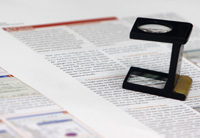Wow! Would that be great, or what? Not so many emails to save – or not. Not so many emails to plow through – most of them mislabeled – to find what you are looking for. Emails you can “get” at a glance and move on with your day’s work!
Your reader feels exactly the same way. No surprise there. So how do you write a faster, clearer email that your reader will get at a glance? And fewer of them?
Let’s begin with the basics:
1. Here’s the basic question you need to ask yourself before any on-the-job communication: Does this information need to be passed along at all? My workshop participants frequently tell me that this one consideration can cut as many as half of their emails!
There are many reasons for passing information along in the business situation. Some of them appropriate, others not. Obviously, information should be passed along if it has been requested, or if it is necessary for your reader to work on an assignment. But before you pass this piece of information along in any manner, take a minute to give some serious thought to any other reason you may want to do so, and how what you choose to do with it – send it or withhold it – may be interpreted.
2. If you have decided that yes, the information does need to be passed along, ask yourself (a) who it should be sent to; and (b) the best way to reach him, her, or them.
3. If you have decided to write an email, rather than picking up the phone, texting, or arranging some sort of face-to-face – oh, and don’t forget “writing on paper” as a possibility – let’s get started!
Now that we have taken care of the “fewer” question, let’s tackle “shorter.”
First, decide just what “shorter” really means. Do you, instead, mean “concise”? As short as it can be, while still providing the necessary information?
As for length, your entire email should be not more than a screen, to – pushing it a bit, a screen- and-a-half. Anything more than that should be an attachment.
Your goal is to get all the information into one paragraph, not more than five lines.
Here’s how to do it:
1. Determine why you are writing this email. What is its job? What must this email accomplish?
2. In five lines or less, your first paragraph must tell your reader who, what (the action), when, where, why, and how. For a simple issue, this will probably take care of it, and be all you need.
3. For a more complex matter, the first paragraph will be a “set up paragraph,” like a cover letter, for an attachment. In either case, the first paragraph, not more than five lines, puts the reader in touch – at a glance – with what this is all about, and what he, she, or they need to do about it. If an action is required of your reader, it may also be useful to include “your action required” in the subject line, when appropriate.
To receive your Business Writing Tip of the Week automatically every week, please subscribe to our newsletter. We appreciate your recommending a Gail Tycer business writing workshop for your workplace, or a shorter presentation for an upcoming professional meeting. Thank you.







